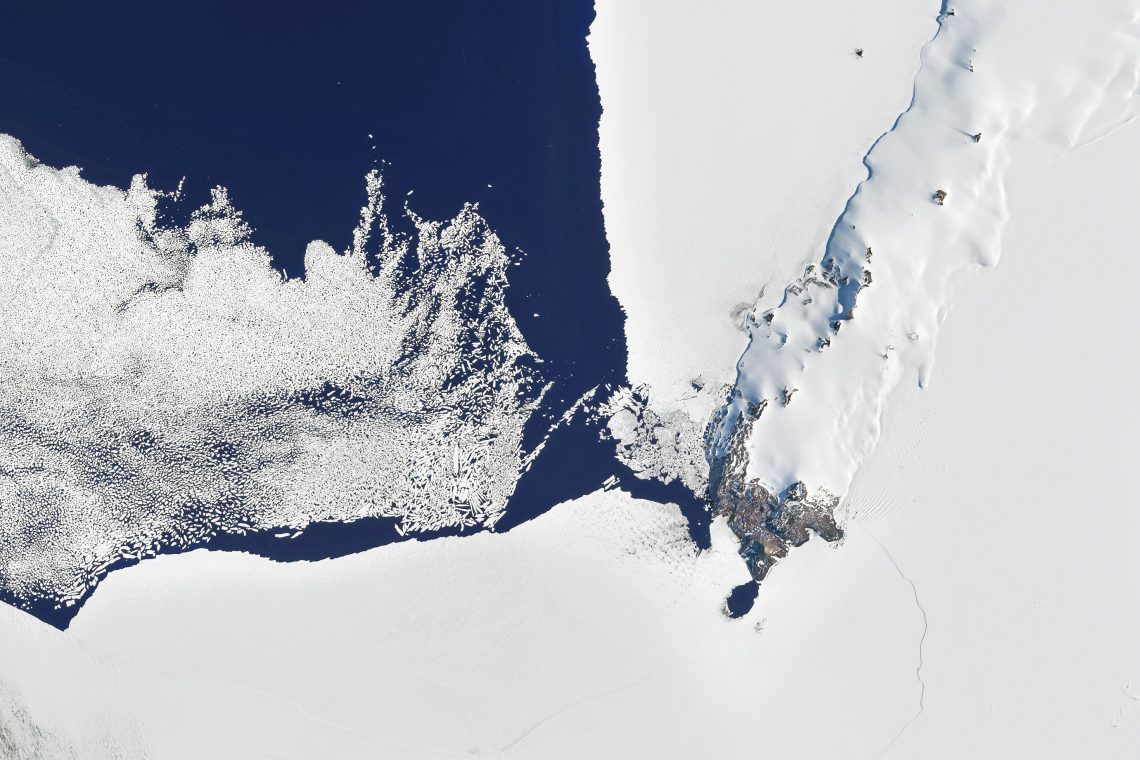Polar competition accelerates
Geopolitical competition in the Arctic and Antarctic is intensifying, with security overtaking climate concerns.

In a nutshell
- Rivalry among nations in the Arctic and Antarctic is growing sharper
- China and Russia are the main challengers to Western interests
- Security and sovereignty concerns now clearly outweigh other priorities
- For comprehensive insights, tune into our AI-powered podcast here
Global competition in the world’s polar regions is escalating. The nature of the rivalry is also changing, particularly in the Arctic. Deliberations in the Arctic Council are noticeably shifting away from their traditional focus on climate change, environmental protection and indigenous communities. These issues remain important, but they are now framed more pragmatically amid rising priorities such as energy, critical resources, security, sovereignty, fisheries protection and economic growth.
Meanwhile, in the Antarctic, growing Chinese and Russian activity is putting established norms of polar governance under strain. The cumulative effects of these stresses have not yet created a new zone of great power competition, but they have spurred more proactive and coordinated actions among NATO allies and like-minded partners in the southern polar region.
The dragon’s shadow
China is increasingly regarded as the primary geopolitical challenger in both polar regions. Beijing’s aggressive actions are the main reason nations are paying closer attention to both the Arctic and Antarctic. Yet China’s objectives and strategies differ between the two poles.
In the Arctic, Beijing’s strategy is proactive and deliberate. The northern corridor supply chain of natural resources from Russia is considered vital. China is constantly seeking access to fisheries and, in the longer term, seabed and land-based resources. It advances these interests through physical presence, investment, and expanding geopolitical influence, and has sought to establish legitimacy by declaring itself a “near-Arctic” power.
Russia remains the primary military threat in the Arctic region. However, Moscow’s Arctic activity is increasingly seen as an extension of the China threat. The Kremlin has long regarded the Arctic as strategic high ground, using it to deter the United States through military threats, intelligence gathering and harassment.
Facts & figures
Russia can threaten the U.S. and Canada with missile and air attacks over the Arctic, and it can interfere with northern transatlantic sea lanes. Until recently, Moscow tried to discourage Chinese involvement in the region. But now the Kremlin, embattled and dependent on Beijing, has partnered more openly with China to demonstrate its relevance. The recent joint bomber exercise near Alaska is just the start. Little can be done to thwart their security cooperation.
Moscow has also sharpened its focus on the Arctic. “Putin’s rhetoric reveals three primary themes,” explains John Kaye in a recent study for the Canadian Macdonald-Laurier Institute, “with the Arctic as a resource-rich frontier, the dualistic thinking on Russia’s Arctic security, and the social development of the Arctic as a critical national project.” According to the report, the Russian leader aims to present military buildup as responsible regional development and to frame new partnerships, especially with China, as diplomatic and altruistic, thereby masking aggressive imperialism. What is clear is that Russia currently views China as empowering its Arctic ambitions.
It is also clear that Arctic nations’ efforts to defend their sovereignty and secure resources, especially oil and gas, have taken precedence over environmental issues as the main driver of Arctic policy. Even with climate change, the North Polar region will not become reliably ice-free year-round, meaning commercially viable sea trade across it is unlikely.
Global warming is no longer the main factor shaping security, commercial or resource extraction policies. For example, harsh Arctic conditions combined with low commodity prices continue to dampen the potential expansion of mining in the near term. The Northern Corridor trade appears stagnant, except for the trade between Russia and China. Security and sovereignty are the driving agendas in the West. The impetus to prioritize climate action over balanced polar policies – ones that both safeguard the regions and address long-term security threats – is losing geopolitical influence.
Responding to Arctic challenges
Every Western nation is expanding its security response in the Arctic region and showing a greater willingness to engage in multinational security cooperation.
Canada. Canada is the bellwether state. Traditionally, Ottawa has not actively sought out multinational cooperation. Recently, however, it has reversed course on many issues.
For example, in August, the Canadian government announced it was removing restrictions on participating in U.S. regional missile defense activities and is in talks with Washington to join the Golden Dome program, a proposed multi-layer defense system. Another sign of significant change is Canadian participation in the Icebreaker Collaboration Effort (referred to as the ICE Pact), a trilateral Canadian-U.S.-Finnish partnership to pool expertise and manufacturing resources to accelerate and expand the shipbuilding of Arctic vessels.
Moreover, in 2024, Canada published a new and more assertive Arctic foreign policy, accompanied by announced increases in defense spending, including nearly half a billion dollars for Arctic initiatives.
United States. Despite tensions over trade, crime and border issues, Washington and Ottawa are ramping up cooperation on the development of Arctic infrastructure, expansion of air and maritime situational awareness and other defense matters. Alongside the development of the Golden Dome, the U.S. has unveiled plans for additional infrastructure, including funding a deepwater port in Nome, Alaska and speeding up the development of Arctic-capable ships.
Responsibility for coordinating the government’s shipbuilding strategy has shifted from the National Security Council to the more influential Office of Management and Budget, showing America’s intent to accelerate the expansion of its maritime forces.
Another distinctive sign of change is the Trump administration’s revision of guidelines for the U.S. Arctic Research Plan. The U.S. Arctic Research Commission recently completed and distributed an executive document identifying four key sectors of national security in the region: military, community, energy and economic. The report identifies some overarching themes consistent with a shift toward a more pragmatic effort to achieve a secure, stable and prosperous Arctic.
The U.S. is also paying more attention to Alaska. The present administration is working to revitalize the state’s declining population and stagnant economy. In recent months, several cabinet officials made visits, and President Donald Trump hosted a high-profile meeting with Russian President Vladimir Putin in Alaska.
Nordic states. Finland may be the most proactive Nordic state in promoting cooperation with the U.S. and Canada. Sweden and Norway, however, also see increasing Arctic security through multinational cooperation as a priority.
Denmark’s sovereignty over Greenland makes it an Arctic state. While Copenhagen insists Greenland’s future lies in the hands of Greenlanders, it also values the prestige and influence that come with this status. U.S. interest in the island has prompted Denmark to raise defense spending.
Baltic states. While the Baltic states do not have any sovereignty claims in the Arctic, there is growing recognition that ensuring security and protecting infrastructure is essential. Thus, integrating cooperation with the security of the Baltic Sea region is an important initiative.
Competition in the Antarctic
While China’s actions in the Arctic have been aggressive and overt, its agenda in the Antarctic is more opportunistic. A latecomer to the Antarctic Treaty (Consultative Status gained in 1985), it now has five research stations on the continent. The fifth, Qinling, opened in 2024 and is located in Terra Nova Bay near the Italian and South Korean stations in the Ross Sea.
China has two icebreaking ships, Xue Long and Xue Long 2, which support its Antarctic research and logistics programs. Beijing’s investment in Antarctic science is aimed at positioning itself as an international leader, potentially supplanting the U.S.
Facts & figures
The Antarctic Treaty
Enacted in 1961, the treaty designates the entire continent for peaceful purposes and scientific research and prohibits the presence of nuclear weapons.
In contrast, Russia has struggled to adequately fund its Antarctic program since the end of the Cold War. Despite the war in Ukraine, the Russian Antarctic program has received some additional funding, but overall, it will probably never be what it was during the Soviet era or compete with the Chinese and U.S. programs. That said, of late, both China and Russia have tested the norms of permissible activities.
The U.S. has held a leading role in Antarctic science and policy since the Antarctic Treaty was ratified in 1961. Its continuous presence at the South Pole has been a consistent element of national policy during both the Cold War and more recent periods of tension. The U.S. Antarctic Program relies on steady funding to sustain its operations on the continent and in the Southern Ocean. Recent cuts in polar research and infrastructure renewal raise questions about the continuity of long-term observations and the scope of maritime research in the region.
More by national security expert James Jay Carafano
- Weaponizing hate against the U.S.-India bilateral partnership
- U.S. diplomacy in the Western Balkans
- The implications of Al-Qaeda’s return for U.S. policy
Many observers have noted a perceived U.S. retreat from its leadership role in Antarctica, with some suggesting that China may fill the gap. While the Trump administration places significant emphasis on the Arctic, it does not give the same level of focus to the Antarctic in terms of economic and national security interests.
Nevertheless, several long-standing principles continue to guide U.S. policy in Antarctica. Washington does not recognize any territorial claims on the continent. (Under the Antarctic Treaty, claims by Argentina, Australia, Chile, France, New Zealand, Norway and the United Kingdom are held in abeyance, meaning they are neither given up nor formally accepted.) In addition, the U.S. reserves the right to take part in any future uses of the continent, supports its use exclusively for peaceful purposes, and upholds free access for scientific research and other peaceful activities.
Scenarios
Most likely: Expanded Arctic cooperation
The U.S. and Canada will very likely ramp up Arctic cooperation. This would set the conditions for a reset of both U.S. and Canadian policies. In addition, a larger informal coalition of Northern states similar to the Quad may emerge to organize joint policies with Canada, Iceland and the Nordic and Baltic countries on stewardship and security issues.
Moderately likely: The U.S. demands guarantees in Greenland
How Greenland’s sovereignty and security will ultimately be settled remains uncertain. This does not necessarily mean transferring sovereignty to the U.S., as Washington would likely accept any arrangement that guarantees the island does not fall under Beijing’s influence. President Trump will likely press for a resolution on this issue during his term.
Unlikely: U.S. pushback in Antarctica
Recent cuts to research and infrastructure may weaken American presence on the continent and in the Southern Ocean. This, combined with a stronger U.S. focus on the Arctic, has fueled perceptions of retreat in Antarctica. In the short term, it is unlikely that Washington will take meaningful steps to counter growing Russian and Chinese activity there.
Contact us today for tailored geopolitical insights and industry-specific advisory services.







